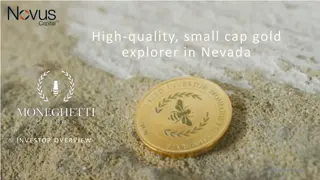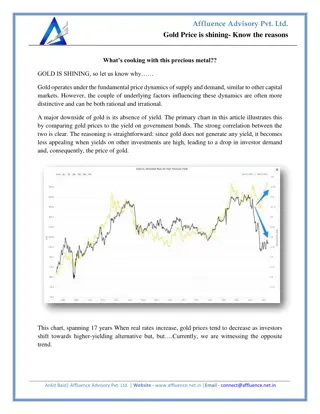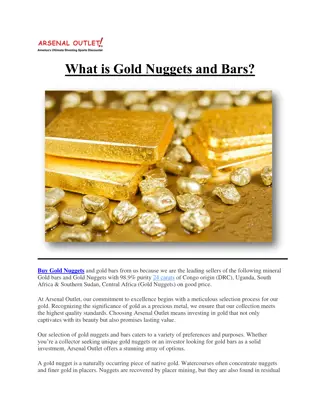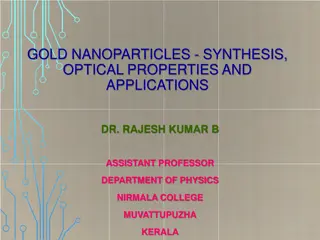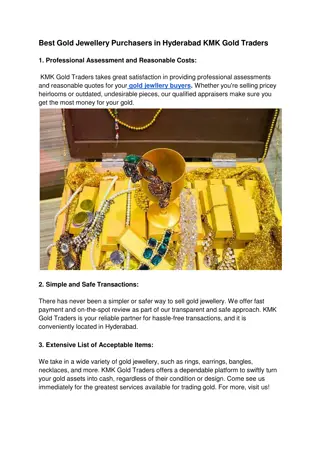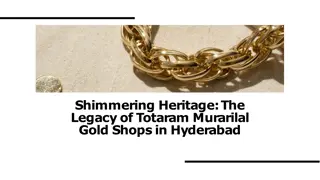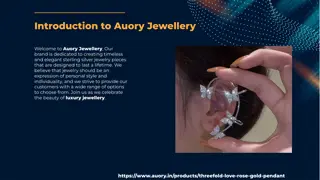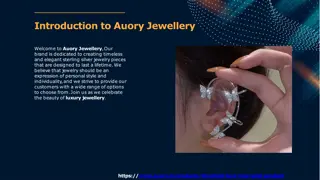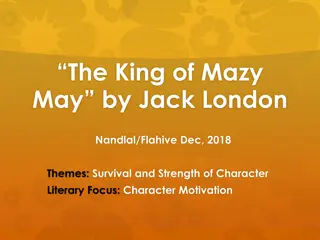
Extraction of Gold: Methods and Processes Revealed
Discover the intricate processes involved in the extraction of gold from minerals, including the MacArthur-forest cyanide process and Plattner's chlorine process. Learn about the steps from roasting the ore to precipitating gold, as explained by Dr. Atul Kumar Singh, Assistant Professor at M. L. Arya College. Explore the innovative techniques used to isolate this precious metal efficiently.
Download Presentation

Please find below an Image/Link to download the presentation.
The content on the website is provided AS IS for your information and personal use only. It may not be sold, licensed, or shared on other websites without obtaining consent from the author. If you encounter any issues during the download, it is possible that the publisher has removed the file from their server.
You are allowed to download the files provided on this website for personal or commercial use, subject to the condition that they are used lawfully. All files are the property of their respective owners.
The content on the website is provided AS IS for your information and personal use only. It may not be sold, licensed, or shared on other websites without obtaining consent from the author.
E N D
Presentation Transcript
Gold Course Instructor: Dr. Atul Kumar Singh Assistant Professor Department of Chemistry M. L. Arya College, Kasba Purnia -854330 India
Extraction of Mineral gold Extraction of Gold from mineral in which gold is present in a combined state. Mineral is subjected to roasting in order to remove easily oxidizable impurities like sulphur, tellurium, arsenic, antimony etc. The roasted ore is then subjected to the MacArthur-forest cyanide process or Plattner s chlorine process.
A. MacArther-forest cyanide process This process is based on the fact that gold dissolves in alkali potassium cyanide in the presence of air or oxygen due to formation of cyanide complex In this process finely powdered roasted ore is filled in a large vats made of cement or iron consisting of false wooden bottoms with holes.
A solution of potassium cyanide (0.5%) percolates all through for 12-24 hours to form the cyanide complex. The metal gold is precipitated by zinc shavings.
B. Plattners Chlorine Process In this process finely powdered roasted ore is filled in a large vats with false bottoms, then moistened and saturated with current of chlorine from underneath and left for 24 hour. The gold chloride formed from the reaction of chlorine is leached with water. The solution is transferred to a separate tank
where it is treated with ferrous sulphate to precipitate gold.


